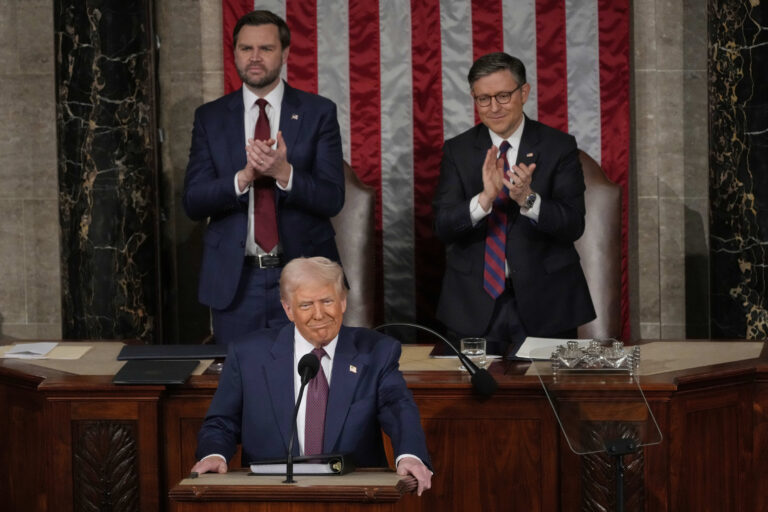Another Wall Street veteran of the financial crisis is stepping aside: Lloyd Blankfein is retiring as CEO of Goldman Sachs after 12 years at the helm of the storied investment bank.
Blankfein will give way to David Solomon, a long-time Goldman executive who has been considered Blankfein’s chosen successor since earlier this year. Solomon will assume the CEO role from Blankfein on Oct. 1 and become chairman of Goldman in 2019.
The succesion announcement came Tuesday as Goldman announced a 44-percent jump in second-quarter profit from a year ago. The performance was largely driven by the investment bank’s core franchises: advising companies on mergers, acquisitions and other deals, and its trading business.
A long-time Goldman employee who rose through the ranks in commodity trading business, Blankfein took the reins of Goldman Sachs in 2006, not long before the Great Recession and financial crisis. Goldman and its competitors accumulated billions of dollars of toxic assets on their books — bad mortgages, collateralized debt obligations and other illiquid assets. In the darkest days of the crisis, it was thought Goldman Sachs may not survive. By late 2008, some of Goldman’s key rivals — Lehman Brothers, Bear Stearns and Merrill Lynch — were either bought in distressed sales or, in the case of Lehman, went bankrupt.
Blankfein moved quickly to save the firm from its near-death experience, tapping the Federal Reserve’s emergency programs set up to keep banks from failure. Eventually and reluctantly, Goldman took money from the $700 billion TARP bailout program, which it repaid. He pushed the firm’s trading desks to aggressively take positions through the market’s volatility and in 2009, only a year after the crisis, Goldman reported record earnings driven largely by trading revenue.
“Lloyd’s market savvy, intellect, energy, enthusiasm, charm and quick wit have helped him successfully steer Goldman Sachs through the financial crisis and position it for the future while earning him great respect and affection inside the firm and from friends and clients around the world,” said Hank Paulson, who was CEO of Goldman Sachs before Blankfein. He left the firm to become Treasury Secretary for President George W. Bush.
But the efforts gave Goldman and Blankfein, a son of a postal worker who grew up in housing projects, few fans outside of Wall Street in the early years after the crisis. The bank came under heavy criticism that it directly benefited from the 2008 government bailout of insurance giant AIG, and was just as responsible for creating the revolving door of toxic mortgages that led to the crisis. There were also accusations that Goldman’s bankers took bets on the mortgage market against their clients’ own positions.
Goldman Sachs’ employees, among the best paid in finance, continued to be paid well despite the mess Wall Street left for the rest of the country. A scathing article written for Rolling Stone nicknamed Goldman Sachs “the great vampire squid,” a term that stuck for years. The months-long Occupy Wall Street movement portrayed Goldman as a villain.
Congress eventually passed a law, the Dodd-Frank Act, which imposed new restrictions on Goldman’s business. The firm was bought under the oversight of the Federal Reserve, and is now subject to annual “stress tests” like other big banks.
Blankfein worked to rehabilitate the bank’s image, and diversify Goldman’s businesses beyond the traditional trading and advising. Goldman Sachs now offers online savings accounts and personal loans to consumers, and there are plans for it to enter the credit card business — all businesses that Goldman shunned before the financial crisis.
“Our firm has demonstrated great resiliency and strength over the last 12 years,” Blankfein said in a statement issued Tuesday.
In recent years, Blankfein seem to become more comfortable and open. He joined Twitter, where he often tweets on current events and regularly makes veiled criticism of President Donald Trump and his administration. The once buttoned-up executive grew a beard, and has been more recently photographed without a necktie than with one.
Goldman shares fell less than 1 percent Tuesday and are down about 10 percent so far this year, making it the worst performer among the big banking companies in the S&P 500.
Solomon has been with Goldman Sachs since 1999, joining as a partner (something that’s rare for a firm with a culture of lifetime commitment). He held the title of co-chief operating officer along with Harvey Schwartz until Schwartz retired this past spring. But Solomon did not come up through Goldman’s traditional ranks and culture — making him somewhat of an outsider and poised to make more substantial changes at the firm.
The 56-year-old Solomon is sometimes better known for moonlighting as a DJ at major clubs around the world under the name DJ D-Sol. Last month, Solomon released his first single under his DJ name: a cover of Fleetwood Mac’s song “Don’t Stop.”
With Solomon, along with the firm’s relatively new finance chief, Martin “Marty” Chavez, a 54-year old gay Hispanic man with arm tattoos, the firm seems to be portraying a much more open, egalitarian image compared to the power suits and stuffier white shoe nature that built the firm through the 20th Century.
Blankfein’s retirement will leave Jamie Dimon, chairman and CEO of JPMorgan Chase, as the last head of a Wall Street firm who was around during the financial crisis. Kenneth Chenault, who led American Express through the crisis, retired earlier this year.
(AP)











